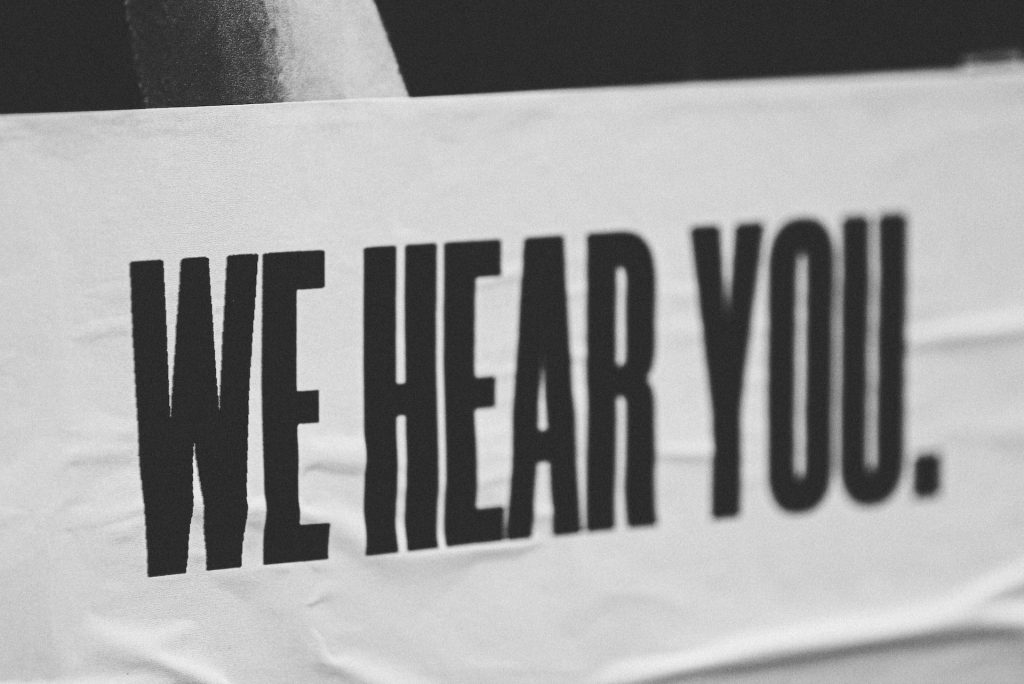
CX Vs UX: Customer Experience Vs User Experience To Scale Your Business
Julian Wallis
14 min read

Businesses that focus on creating an exceptional customer experience (CX) and user experience (UX) are able to stick out in a crowded market in this modern digital era. CX and UX are two distinct concepts, but they are closely related and can significantly impact a company’s bottom line, especially if you’re looking to scale.
In this article, we pit CX vs UX to explore their importance in scaling a business, similarities, differences, and how companies can decide which to prioritise if they want to scale their business. Let’s start by clarifying what they are, shall we?
What Is CX? 👤
CX, or customer experience, is a holistic approach to customer interactions with a company. It encompasses every touchpoint and interaction that a customer has with a business, from the initial point of contact to post-purchase support. These touchpoints include website visits, social media interactions, phone calls, emails, in-store experiences, and more.

CX aims to create a positive emotional connection with the customer, which can increase loyalty to the brand and ultimately drive revenue growth. When customers have positive experiences with a company, they are more likely to become repeat customers, refer the company to others, and leave positive reviews. Additionally, positive emotional connections help create a sense of brand identity and community beyond the transactional relationship between a business and its customers.
CX encompasses a wide range of business activities, including marketing, sales, customer service, and retention efforts. Businesses must design and implement strategies prioritising customer satisfaction and experience throughout the customer journey. This includes providing timely and helpful responses to customer enquiries, offering personalised recommendations, and providing seamless transitions between different communication channels.
By prioritising CX, businesses can differentiate themselves in a crowded marketplace, build long-term customer relationships, and drive sustainable revenue growth. You can also do this effectively with the help of a customer experience transformation partner.
What Is UX? 👨💻
UX, or user experience, refers to a user’s experience when interacting with a product or service, specifically within the digital realm. This can include a range of digital assets such as websites, mobile apps, and software interfaces. UX aims to create a user-friendly, enjoyable experience that encourages engagement, satisfaction, and loyalty.
UX designers focus on creating products and services that are easy to use, intuitive, and visually appealing. They consider the user’s needs, preferences, and behaviours to design interfaces that make it easy for users to accomplish their goals. This includes simplifying complex processes, reducing clutter, and providing clear navigation and feedback.
The importance of UX lies in its ability to impact user behaviour and ultimately drive business results. When users consistently have a positive experience with a service or product, they’re more likely to continue using it, recommend it to others, and leave positive reviews. Conversely, poor UX design can result in frustration, disengagement, and negative reviews, which can harm a business’s reputation and bottom line.
By prioritising UX, businesses can create products and services that meet user needs and preferences, and increase engagement as well as satisfaction, ultimately driving business results. It’s an essential component of digital strategy and can seriously affect the success of a business in the digital marketplace.

Why CX & UX Are Important To Scale A Business
Creating exceptional CX and UX is essential for businesses to stay competitive and grow in today’s digital marketplace. Here are some reasons why.
🦄 Differentiation
With so many options available to customers, businesses need to differentiate themselves by offering exceptional CX and UX. Offering exceptional CX and UX can help you differentiate yourself by providing customers with a unique and memorable experience. A company with a reputation for providing a great customer experience will more easily attract and retain customers.
🙋 Increased Customer Loyalty
When customers have a positive experience with a company, they are more likely to become repeat customers, recommend the company to others, leave positive reviews, and are more likely to become loyal customers. By providing exceptional CX and UX, businesses can increase customer satisfaction and build trust with their customers. Loyal customers are more likely to purchase again, recommend the company to others, and leave positive reviews, which can all help to increase a company’s revenue.
💸 Increased Revenue
As mentioned previously, businesses prioritising CX and UX can increase customer satisfaction, engagement, and loyalty. As a result, this can increase revenue and profitability because customers who have a positive experience with a company are more likely to buy its products or use its services again and again. Plus, positive reviews and recommendations from satisfied customers will help attract new customers and increase sales.
🛒 Reduced Customer Churn
By creating exceptional CX and UX, businesses can reduce customer churn or the rate at which customers stop doing business with a company. Customer churn is a major challenge for businesses, as it can be costly to replace lost customers. By providing exceptional CX and UX, businesses can reduce customer churn by providing a positive experience that encourages customers to stay with the company. This can lead to long-term customer relationships and increased revenue over time.
Customer Experience Vs User Experience: The Similarities ⚖️
Customer experience and user experience share several similarities, as both are focused on creating positive experiences for users and customers. Some of the similarities between CX and UX include the following:
- User-Centric Approach: Both CX and UX are focused on understanding the needs and expectations of users and customers and creating solutions that meet those needs.
- Design Thinking: Both employ design thinking methodologies to create user-centred solutions. This involves using various research methods, prototyping, and testing to create solutions that meet user needs.
- Focus On Emotions: Both customer experience and user experience focus on creating positive emotional experiences for users and customers, which can increase satisfaction and loyalty.
- Cross-Functional Collaboration: Both approaches require collaboration across different functions and departments within an organisation, including marketing, design, development, and customer support.
- Continuous Improvement: Both CX and UX involve ongoing monitoring and improvement to ensure that solutions continue meeting the evolving needs and expectations of customers and users.

The main thing to know is that both CX and UX share a common goal of creating positive experiences for users and customers, which can drive customer loyalty, satisfaction, and business success.
Customer Experience Vs User Experience: The Differences ⚔️
🎯 Scope & Focus
CX is a broader concept encompassing all aspects of the customer’s relationship with a business, including marketing, sales, customer service, and more. It considers the entire customer journey and all touchpoints, from initial awareness to post-purchase support. Furthermore, CX is focused on creating a positive emotional connection between the customer and the business, ultimately driving customer loyalty, retention, and advocacy.
On the other hand, UX is focused specifically on the user’s interaction with a product or service. UX design considers a product or service’s usability, functionality, and overall user experience. This approach is focused on creating products or services that meet user needs and goals and ultimately drive user satisfaction and engagement.
While both CX and UX are concerned with creating positive experiences, CX has a broader scope that encompasses all aspects of the customer’s relationship with a business, while UX is focused specifically on the user’s interaction with a product or service.
⭐ Goals & Objectives
The goals of CX and UX are different. CX aims to create a positive emotional connection with the customer, increase customer loyalty, and drive revenue growth. It seeks to provide a seamless and enjoyable experience throughout the entire customer journey. The primary goal of CX is to create positive emotional connections between the customer and the business, ultimately driving customer loyalty, retention, and advocacy.
On the other hand, UX aims to make the user’s experience as easy, intuitive, and enjoyable as possible, leading to increased engagement, satisfaction, and loyalty. The primary goal of UX is to create products or services that meet user needs and goals and ultimately drive user satisfaction and engagement.
CX objectives are often aligned with broader business goals, such as increasing revenue, improving profitability, or expanding market share. UX objectives focus on improving the usability, functionality, and overall user experience of a product or service. UX aims to create products or services that are easy to use, enjoyable, and effective in helping users achieve their goals, whereas CX seeks to provide customers with a consistent, seamless, and personalised experience across all touchpoints.
👨👨👧👧 Audience
The difference between CX and UX in terms of the audience they focus on is that CX is concerned with the entire customer base of a business, including current, potential, and past customers. It aims to create positive experiences for all customers, regardless of their specific needs, goals, or preferences.
However, UX is concerned with a specific user or user group who interacts with a product or service. It aims to create products or services that meet the specific needs, goals, and preferences of the target user or user group.
CX considers the entire customer journey, from initial awareness to post-purchase support, and aims to provide a consistent and smooth experience across the various touchpoints. UX considers the unique characteristics and behaviours of the target user or user group and aims to create a tailored experience that meets their specific needs and goals.

🕵 Research Methods
CX research methods often include a mix of qualitative and quantitative methods, such as surveys, focus groups, customer interviews, and data analysis. CX researchers aim to understand the customer’s emotional response to the brand and the product or service. In contrast, UX research methods are typically focused on qualitative methods, such as contextual enquiry, user interviews, and usability testing. UX researchers aim to understand the user’s needs, preferences, and behaviours to create an interface that meets their expectations.
CX research is often conducted at various touchpoints throughout the customer journey, from initial awareness to post-purchase support. This is often to identify customer pain points, expectations, and preferences and to measure customer satisfaction, loyalty, and advocacy.
On the other hand, UX research is often conducted during the design and development process of a product or service often to identify user needs, goals, and preferences and evaluate a product or service’s usability and overall user experience.
Both can utilise tools and platforms like Clearbit for marketing intelligence and to know your audiences like never before.
📊 Metrics
CX metrics are often more business-oriented and include metrics such as Customer Effort Score (CES), Customer Satisfaction (CSAT), and Net Promoter Score (NPS), among others. These metrics measure customer loyalty, satisfaction, and ease of use.
UX metrics are more user-oriented and include task success rate, time on task, and error rate. These metrics measure the effectiveness and efficiency of the interface.
CX metrics are used to measure customer loyalty, retention, and advocacy, as well as to identify areas for improvement in the overall customer experience. These are also tracked over time to evaluate the effectiveness of CX strategies and initiatives. On the other hand, UX metrics are used to measure the usability, functionality, and overall user satisfaction of a product or service. They are also used during usability testing and other user research activities to evaluate the effectiveness of UX strategy and design decisions.
🤝 Collaboration
CX is a cross-functional effort that involves collaboration with various departments across the organisation, including marketing, sales, customer service, and product development. CX teams work closely with these departments to ensure a seamless and consistent customer experience across all touchpoints. They often lead initiatives such as customer journey mapping, customer feedback analysis, and customer segmentation, which require collaboration with other departments.
UX is more design-focused and involves collaboration with other design and development teams, such as product design, engineering, and quality assurance. UX teams work closely with these teams to ensure the usability, functionality, and overall user experience of a product or service. They often lead initiatives such as user research, user testing, and UX design, which require collaboration with other design and development teams.
So, while both CX and UX involve collaboration with other departments and teams, CX is more cross-functional and involves collaboration with various departments across the organisation, while UX is more design-focused and involves collaboration with other design and development teams.
📝 Touchpoints
CX encompasses all touchpoints across the entire customer journey, from initial awareness to post-purchase support. This includes marketing campaigns, customer service interactions, and online and offline customer experiences. However, UX focuses on touchpoints directly related to the user’s interaction with a product or service, such as the user interface, navigation, and functionality. This includes website design, mobile app design, and product design.
CX focuses on creating a seamless and consistent experience across all touchpoints to improve overall customer satisfaction, loyalty, and advocacy. UX focuses on creating a user-friendly and efficient experience that meets users’ needs and preferences.

Summarising the above points, CX and UX are both essential components of a successful business strategy. While CX focuses on the customer journey as a whole, UX focuses on the user’s experience with digital products and services. Understanding their differences is essential for businesses to develop a comprehensive strategy that prioritises customer satisfaction, loyalty, and engagement across all touchpoints.
Prioritising CX Or UX To Scale Your Business 🥇
After delving into the similarities and differences between CX vs UX, here are some steps to consider when deciding which to prioritise to scale your business.
- Identify Business Goals: Determine the business goals and objectives that are most critical to your company’s success, such as revenue growth, customer retention, or market share.
- Understand Customer Needs: Conduct research to understand customer needs, pain points, and preferences across the entire customer journey.
- Assess Product/Service Stage: Evaluate the stage of the product or service development, as well as the level of competition in the market.
- Determine Priorities: Based on the above factors, determine whether CX or UX should be prioritised at this stage of the business. For example, if the company is in the early stages of product development, UX may be a higher priority to ensure that the product meets user needs and is user-friendly. However, if the company is focusing on customer retention, CX may be a higher priority to ensure a seamless and positive customer experience across all touchpoints.
- Create An Action Plan: Once you determine the priorities, create an action plan to address the areas that require improvement. This may include initiatives such as customer journey mapping, usability testing, or customer feedback analysis.
- Monitor & Adjust: Regularly monitor and adjust CX and UX strategies based on feedback and performance metrics to continuously improve the customer experience and drive business growth.
Prioritising between CX and UX depends on your company’s business goals, customer needs, and the product/service development stage. By understanding these factors and creating an action plan to address areas of improvement, you can improve both CX and UX to scale your business. A tech consultant can prove quite beneficial here.
Conclusion: CX Vs UX To Scale Business 🧐
Neither CX nor UX is inherently “better” for a company to scale their business as both play critical roles in creating a positive customer experience and driving business growth. The optimal approach for a company will depend on a variety of factors, including the nature of the company’s business, the stage of product or service development, and the target audience.
If your business is focused on customer acquisition, a focus on UX may be more effective in ensuring that the product or service meets the needs of its users and that the user experience is streamlined and efficient. However, if your focus is on customer retention and building customer loyalty, CX may be more effective in creating a seamless and consistent experience across all touchpoints, building solid customer relationships, and encouraging repeat business and positive referrals.
Ultimately, both CX and UX are important to consider when scaling your business. A successful company must prioritise both CX and UX, as each contributes to a positive customer experience and can help build brand loyalty and drive business growth. A balanced approach that prioritises both CX and UX, tailored to your company’s specific business goals and target audience, is likely to be the most effective way to scale your business.
If you want a highly skilled team of CX and UX experts to help transform your customer journey and effectively scale your business, don’t hesitate to chat with us today. We’d be happy to discuss your situation in detail to help ensure your company CX/UX goals are properly identified and met.
Topics
Published On
March 06, 2023

